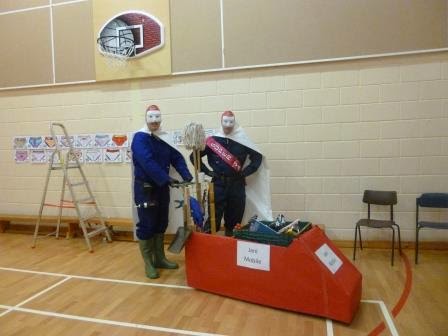First of all we had a go at making our own seismographs - an instrument to measure the strength of earthquakes. Earthquakes are measured on a scale called the Richter scale.
We made our seismographs with water bottles, rulers, pens and lots of masking tape.
We put a long sheet of paper on the tables and, as someone shook the table to simulate the earthquake, someone else in the team pulled the paper slowly along. The pen marked a pattern on the paper to show us the strength of our earthquake.
They worked rather well I think!
Next we investigated how strong structures need to be to withstand an earthquake.
This time we used lego and constructed a 'shake table' out of elastic bands, boards and tennis balls.
Once we had our table ready we measured how far we could pull the top board to simulate an earthquake. This was important so that we could have the same size shake for each trial.
We decided on a base size for our tower and constructed four towers with the same base size but with different heights. Again, to keep the test fair, the bases had to be same each time.
After we had tested each one we started again with a different base size and tested them too.
The conclusion we drew was that the bigger the base, the stronger the building.
Some of us also tried a different construction material.





























































